Categories
Kudoz is a community-powered learning platform that caters specifically to adults with cognitive disabilities who experience a poverty of novelty and growth in their lives. The purpose of the web platform is for people with cognitive disabilities (kudoers) to book in-person learning experiences with community hosts.
Using the catalogue as my research tool, a design fellow will assume the role as a tech coach and offers “Take our new website for a spin” as an experience available for booking.
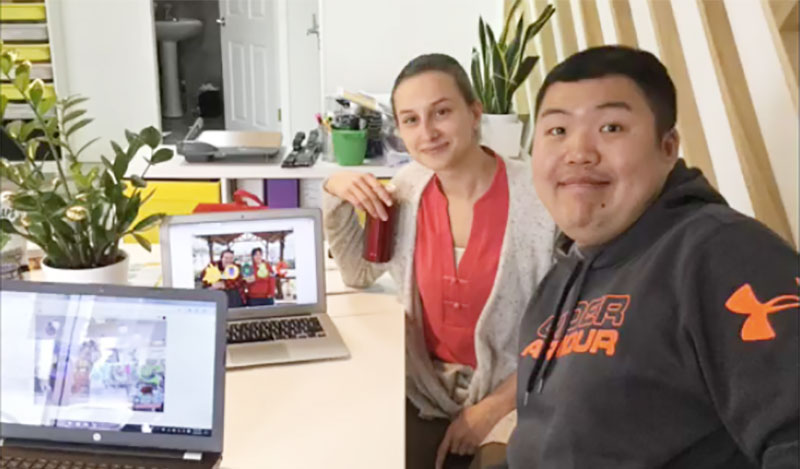
Research methods and tools
In total, I hosted six experiences for kudoers. I facilitated the 1-hour experiences as a part interview and part usability testing session. I interviewed kudoers to understand how kudoers choose experiences on the catalogue and what factors affect their decisions.
Kudoers have a wide range of abilities and tech skills. One segment of kudoers are non-verbal, so with this segment, I used sticky notes as my research tool. I asked the kudoers to sort factors that make up an experience, such as “location”, “host’s response time”, and “media” (photos or videos) into three buckets three buckets: “Meh, don’t care”, “Sure”, and “I need to know this, important”.
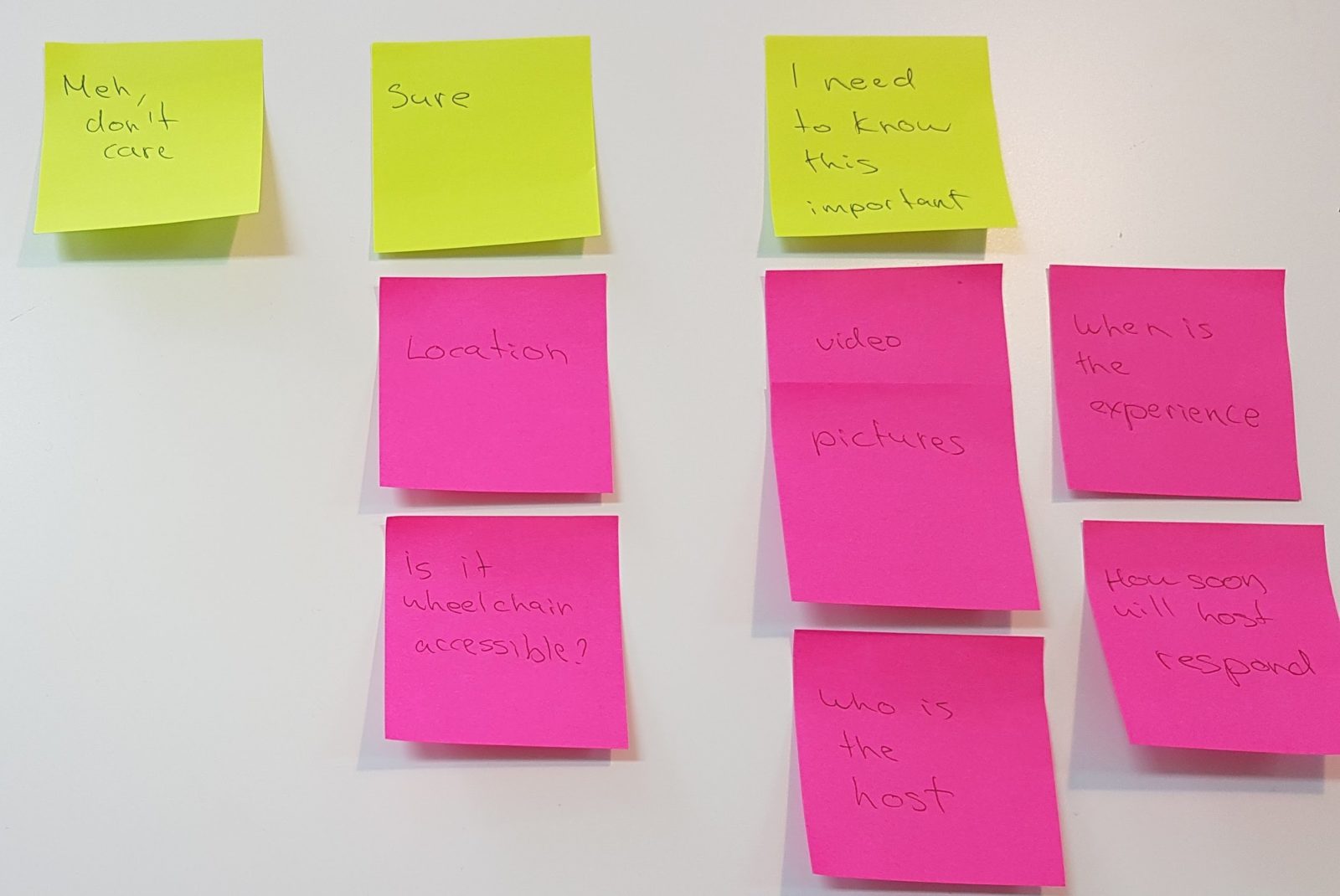
For the usability testing of the new platform, I walked the Kudoers through scenarios and asked them to complete tasks such as “choose and book an experience.” As the Kudoers went through the tasks, I noted which interactions worked well, which caused confusion, and their overall behaviour patterns.
Depending on the performed usability task, the comfort level of Kudoers, and how buggy the test website was being on a given day, we switched between the test website, the digital prototype on Invision, and paper prototypes.
Making sense of the data
While facilitating the usability and tech coaching sessions, I was looking for patterns and segments to better understand Kudoer’s needs and mental models. I found that Kudoers are very diverse in their needs and pain points around the use of the Kudoz platform. Some Kudoers can browse and click through a website at such a high speed that it is a challenge to follow along fast enough. In contrast, some Kudoers can’t read and only responded to the visuals on the web catalogue.
I group my findings of how Kudoers use the catalogue using the following behaviour patterns:
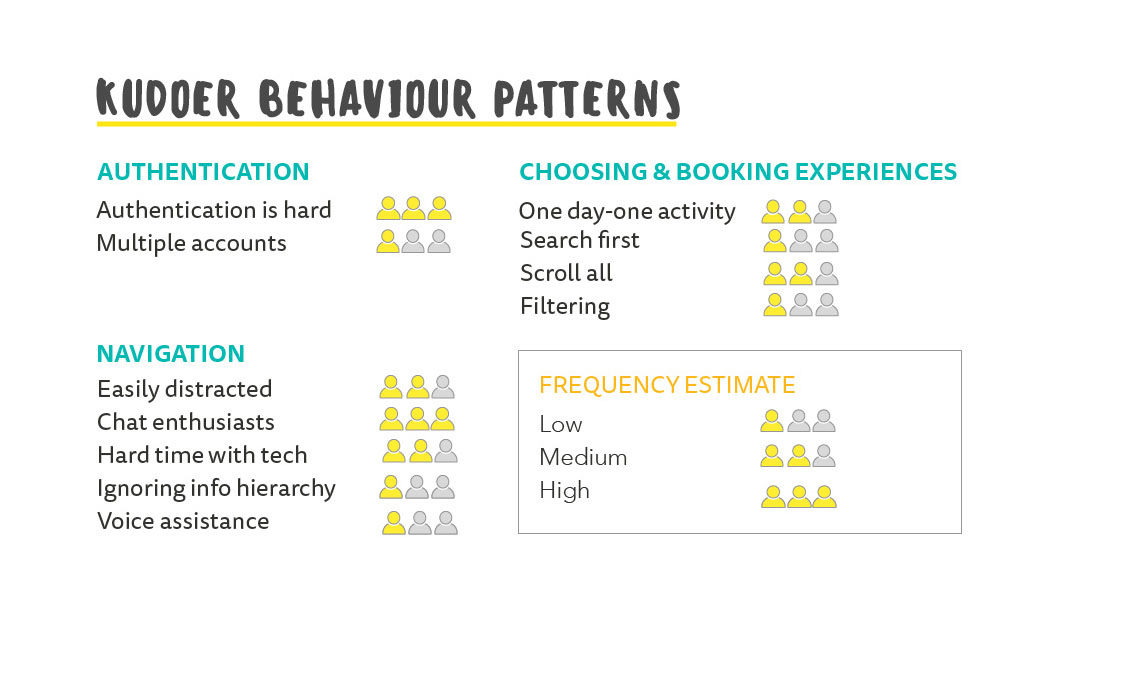
Authentication
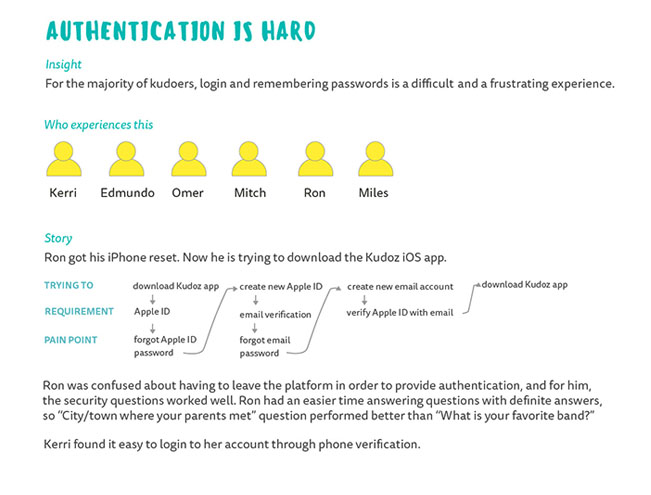
For all of the Kudoers I had the pleasure of working with, remembering login information and passwords is a frustrating experience.
After having his phone reset, Ron* tried to download the Kudoz app. To do so, Ron needed to embark on a long process of creating a new Apple ID and then creating a new email in order to verify the Apple ID.
Kudoers like Kerri*, Edmundo*, and Ron were likely to create a new account if they forget the password to their old account. Kerri has 20+ Instagram accounts.
Ron was confused when asked to exit one application to provide authentication on another platform, so an authentication method that worked well for Ron was answering security questions. For Kerri phone verification method worked well, she could enter a pin code received via text to access her account.
I saw Omer bury his face under his hands in an expression of defeat as that the “password you entered is incorrect, please try again” message came up on the screen.
What if we could have a friendlier, gamified authentication process that gently takes a Kudoer into an “Unlock your account” game, and provides incentives to unlock an existing account instead of creating a new one, like a message saying “You (Kudoer with this email address) have an experience coming up!”.
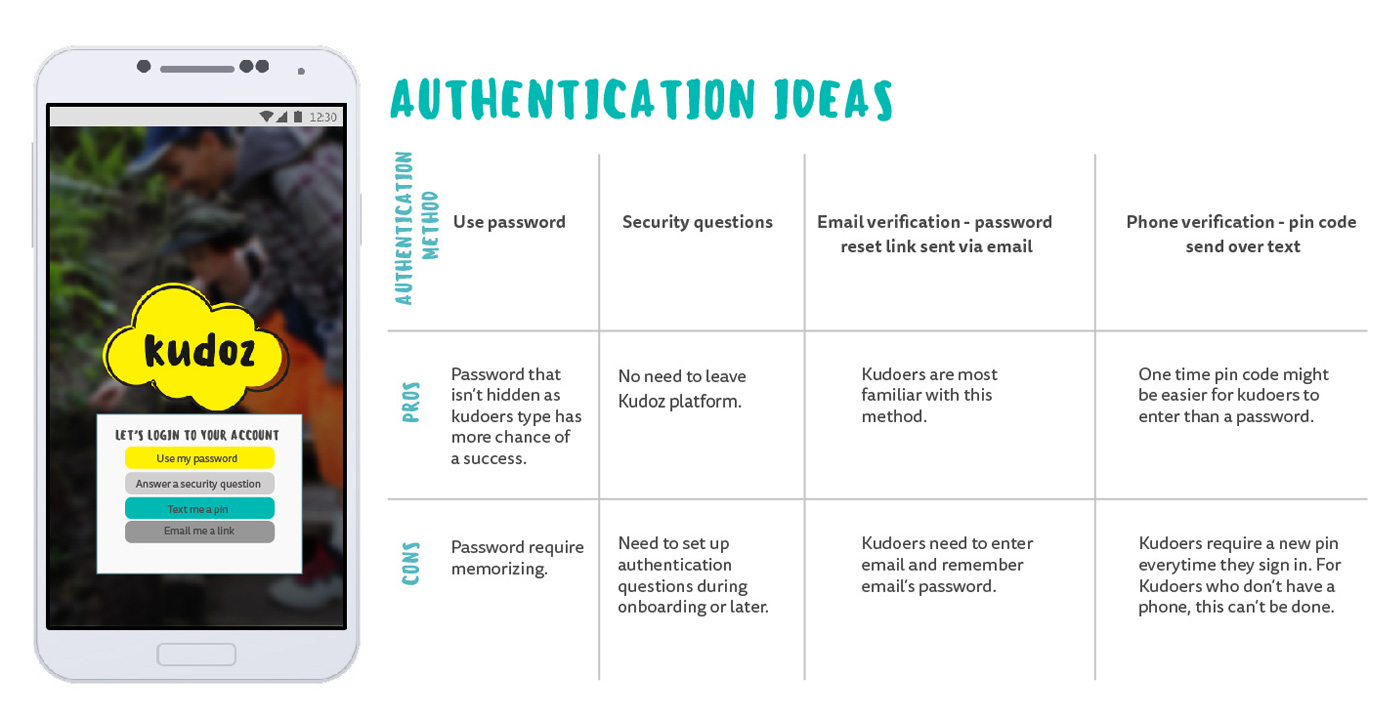
Navigation
In a “Hard Time With Tech” group, along with Omer and Stuart, Ron was not sure when he should be pressing a button on the screen or the home button, or scrolling right or left. Having an easy to follow guided process is important for the “Hard Time With Tech’ group, as well as the “Easily Distracted” Joanne and Michael, and “Ignoring Info Hierarchy” Mitch and Michael – who didn’t notice top bar menus.
Joanne, Michael, Mitch and Edmund are “Chat Enthusiasts”, they are likely to look into chat to complete most interactions, including looking up the time and location of an upcoming experience, or rescheduling an experience. We can help kudoers access what they are looking for by showing the experience details in the chat and providing them with relevant links. Or bring in a friendly chatbot, because that would be fun.
Kudoers like Sean and Jesse can’t read and therefore would need a voice assistant feature to be able to book experiences independently.
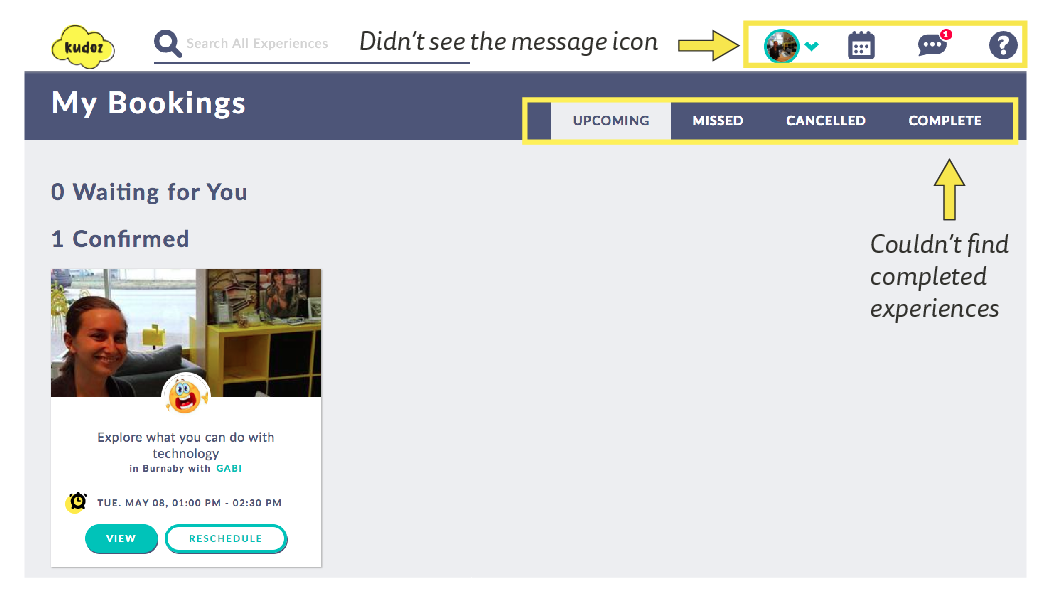
Choosing and Booking Experiences
In exploring how Kudoers browse experiences, I found that Michael and Joanne would scroll through all of the experiences, even when they had a specific experience in mind that they were looking for. The young tech-savvy segment of Edmund and Jin used filtering to find experiences, but would only select one category at a time, first browsing “politics and current events”, then “food”, but not selecting multiple categories.
“Search First” Kudoer Mitch would use the search function to look up both new and already booked experiences. For Mitch, it would be helpful to have a mode on the experience indicating that he has booked it. Other kudoers didn’t use the search function at all. My guess is that since they have a hard time with spelling, the search wouldn’t give them the results they are looking for. Therefore having a “Did you mean __? function would be helpful and enable more kudoers to make use of the search function.
“One Day – One Activity” Kudoers such as Sean, Arleen, Tressa, and Joanne have a specific day of the week in mind when looking to book an experience, they are unlikely to book on a day when they already have another activity planned.
Understanding the user behaviour and how the “Scroll All”, “Filtering Experiences”, “Search First” and “One Day- One Activity” groups navigate the platform helps the design team to design the search interaction in such a way that kudoers get to browse the experiences that are most relevant to them.
This is definitely not an exhaustive list of the behaviour patterns of kudoers. The challenge of designing for a neurodiverse user group is that there are so many unique stories and “edge cases”. I’m hoping that these insights on how kudoers use the Kudoz web platform will help to inspire design decisions that will enable many kudoers to easily book experiences, and then go on those experiences to build skills and social capital.
*we changed the names of kudoers for privacy reasons.
